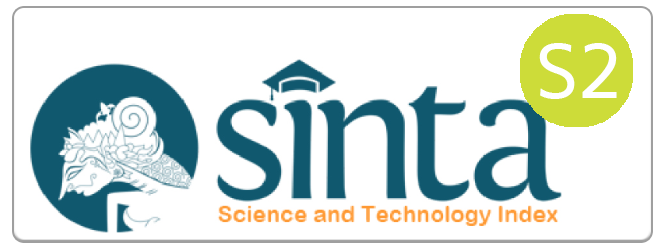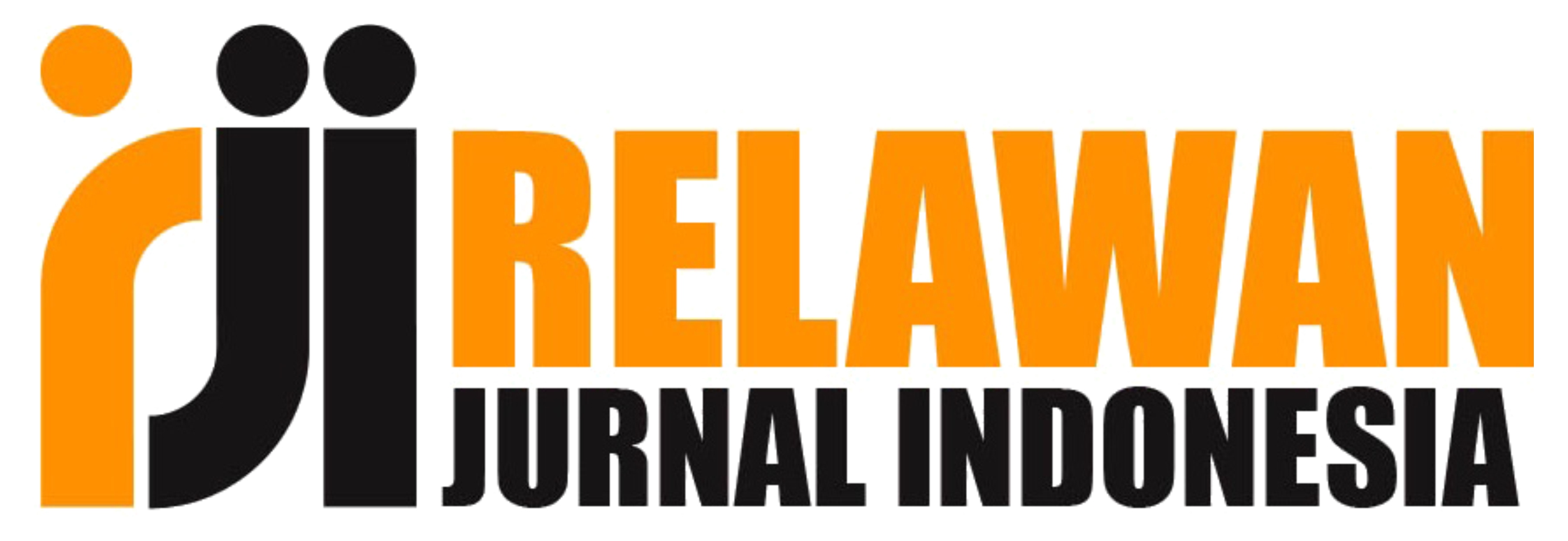The Influence of Financial Literacy on Financial Inclusion: Social Capital as Mediating Variable
Abstract
Keywords
Full Text:
PDFReferences
Al-Sarraf, J., Irani, Z., & Weerakkody, V. (2018). The role of social capital in promoting financial literacy and financial. The British Academy of Management (BAM), 27(1), 17–40.
Altman, M. (2015). Handbook of contemporary behavioral economics: foundations and developments. Routledge.
Atkinson, A., & Messy, F.-A. (2013). Promoting financial inclusion through financial education: OECD/INFE evidence, policies and practice.
Babaei, H., Ahmad, N., & Gill, S. S. (2012). Bonding, bridging, and linking social capital and psychological empowerment among squatter settlements in Tehran, Iran. Journal of Basic and Applied Scientific Research, 2(3), 2639–2645.
Bankable Frontier Associates. (2010). Financial inclusion measurement for regulators: Survey design and implementation (Alliance for Financial Inclusion (AFI) Policy Paper).
Beatrice, V., Murhadi, W. R., & Herlambang, A. (2021). The effect of demographic factors on behavioral biases. Jurnal Siasat Bisnis, 25(1), 17–29. https://doi.org/10.20885/jsb.vol25.iss1.art2
Bongomin, G. O. C., Ntayi, J. M., Munene, J. C., & Nabeta, I. N. (2016). Social capital: mediator of financial literacy and financial inclusion in rural Uganda. Review of International Business and Strategy, 26(2), 291–312. https://doi.org/https://doi.org/10.1108/RIBS-06-2014-0072
BPS. (2014). Statistics of Social Capital. Badan Pusat Statistik.
Buckley, R. P., & Malady, L. (2015). Building consumer demand for digital financial services–the new regulatory frontier. Journal of Financial Perspectives, 3(3). https://ideas.repec.org/a/ris/jofipe/0091.html
Cámara, N., & Tuesta, D. (2017). DiGiX: the digitization index. In BBVA Bank, Economic Research Department (17/03). https://afyonluoglu.org/PublicWebFiles/Reports/2017 BBVA-Digitization Index.pdf
Campbell, J. Y. (2006). Household finance. The Journal of Finance, 61(4), 1553–1604. https://doi.org/10.1111/j.1540-6261.2006.00883.x
Cohen, M., & Nelson, C. (2011). Financial literacy: A step for clients towards financial inclusion. Global Microcredit Summit, 14–17.
Elizabeth, J., Murhadi, W. R., & Sutejo, B. S. (2020). Investor Behavioral Bias Based on Demographic Characteristics. In Proceedings of the 17 th International Symposium on Management (INSYMA 2020). Atlantis Press. https://doi.org/10.2991/aebmr.k.200127.002
Falk, I., & Kilpatrick, S. (2000). What is social capital? A study of interaction in a rural community. Sociologia Ruralis, 40(1), 87–110. https://doi.org/doi.org/10.1111/1467-9523.00133
Filipek, K., Cwynar, A., & Cwynar, W. (2019). Does social capital influence debt literacy? The case of Facebook users in Poland. Prague Economic Papers, 2019(5), 567–588. https://doi.org/10.18267/j.pep.721
Guan, Z. (2020). Social Capital, Financial Literacy and Lending Behaviour of Farmers with Different Incomes--Evidence Based on CHFS 2015 Data. Proceedings of Business and Economic Studies, 3(5). https://doi.org/10.26689/pbes.v3i5.1527
Hair, J. F., Babin, B. J., Anderson, R. E., & Black, W. C. (2018). Multivariate Data Analysis (8th ed.). Cengage Learning.
Halim, Y. K. E., & Astuti, D. (2015). Financial Stressors, Financial Behavior, Risk Tolerance, Financial Solvency, Financial Knowledge, dan Kepuasan Finansial. Jurnal Finesta, 3(1), 19–23.
Hardin, R. (2002). Trust and trustworthiness. Russell Sage Foundation.
Häuberer, J. (2011). Social capital theory. Springer.
Hung, A., Parker, A. M., & Yoong, J. (2009). Defining and measuring financial literacy. RAND Working Paper Series WR-708. https://doi.org/https://dx.doi.org/10.2139/ssrn.1498674
Istrilista, T. M. (2016). Pengaruh pendapatan dan pengetahuan keuangan terhadap perencanaan keuangan keluarga di surabaya. Journal of Business and Banking, 1(1), 1–17. http://eprints.perbanas.ac.id/id/eprint/390
Kempson, E. (2009). Framework for the development of financial literacy baseline surveys: A first international comparative analysis (OECD Working Papers on Finance, Insurance and Private Pensions). OECD. https://doi.org/10.1787/5kmddpz7m9zq-en
Khaki, A., & Sangmi, M.-D. (2016). Financial inclusion & social capital: a case study of SGSY beneficiaries in Kashmir Valley. Khaki, AR, & Sangmi, M.(2016). Financial Inclusion & Social Capital A Case Study of SGSY Beneficiaries in Kashmir Valley. Independent Journal of Management & Production, 7(4), 1005–1033. https://doi.org/10.14807/ijmp.v7i4.424
Khan, F., Siddiqui, M. A., & Imtiaz, S. (2022). Role of financial literacy in achieving financial inclusion: A review, synthesis and research agenda. Cogent Business & Management, 9(1), 2034236. https://doi.org/10.1080/23311975.2022.2034236
Lee, C.-C., Wang, C.-W., & Ho, S.-J. (2020). Financial inclusion, financial innovation, and firms’ sales growth. International Review of Economics & Finance, 66, 189–205. https://doi.org/10.1016/j.iref.2019.11.021
Lusardi, A. (2015). Financial literacy skills for the 21st century: Evidence from PISA. Journal of Consumer Affairs, 49(3), 639–659.
Marla, P. G., & Dewi, A. S. (2017). Peran Modal Sosial Sebagai Mediator Literasi Keuangan dan Inklusi Keuangan pada Usia Produktif di Kota Bandung. Sosiohumanitas, 19(2), 92–103. https://doi.org/10.36555/sosiohumanitas.v19i2.98
Nahapiet, J., & Ghoshal, S. (1998). Social capital, intellectual capital, and the organizational advantage. Academy of Management Review, 23(2), 242–266. https://doi.org/10.2307/259373
Nuryani, H. S., & Israfiani, R. (2021). Pengaruh Literasi Keuangan dan Modal Sosial terhadap Inklusi Keuangan Masyarakat Usia Produktif di Sumbawa Indonesia. Jurnal Manajemen Dan Bisnis, 4(2), 35–42. https://doi.org/10.33395/remik.v4i2
Pulungan, D. R., & Ndruru, A. (2019). Pengaruh Literasi Keuangan dan Modal Sosial terhadap Inklusi Keuangan Mahasiswa. Seminar Nasional & Call For Paper Seminar Bisnis Magister Manajemen.“Membangun Ekonomi Kreatif Yang Berdaya Saing, 132–142.
Robb, C. A., & Woodyard, A. S. (2011). Financial knowledge and best practice behavior. Journal of Financial Counseling and Planning, 22(1), 60–70.
Saputra, R. S., & Dewi, A. S. (2017). Peran Modal Sosial Sebagai Mediator Literasi Keuangan Dan Inklusi Keuangan Pada Kaum Muda Di Indonesia (Studi Kasus Pada Komunitas Investor Saham Pemula). Jurnal Manajemen Teori Dan Terapan, 10(3), 243–257. https://doi.org/10.20473/jmtt.v10i3.3064
Six, B., Van Zimmeren, E., Popa, F., & Frison, C. (2015). Trust and social capital in the design and evolution of institutions for collective action. International Journal of the Commons, 9(1), 151–176. https://doi.org/10.18352/ijc.435
DOI: http://dx.doi.org/10.24856/mem.v37i2.2738
Article Metrics
Abstract view : 3758 timesPDF - 0 times
Refbacks
- There are currently no refbacks.
Copyright (c) 2022 Media Ekonomi dan Manajemen

This work is licensed under a Creative Commons Attribution 4.0 International License.

This work is licensed under a Creative Commons Attribution 4.0 International License.







